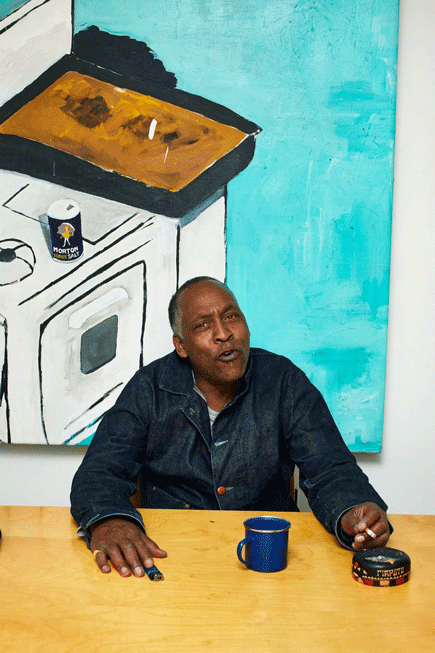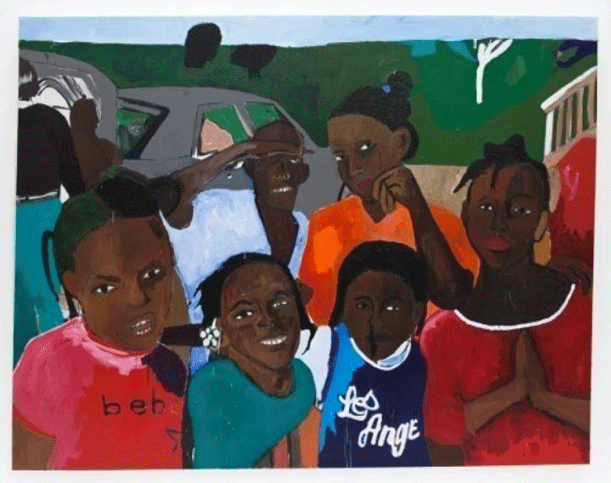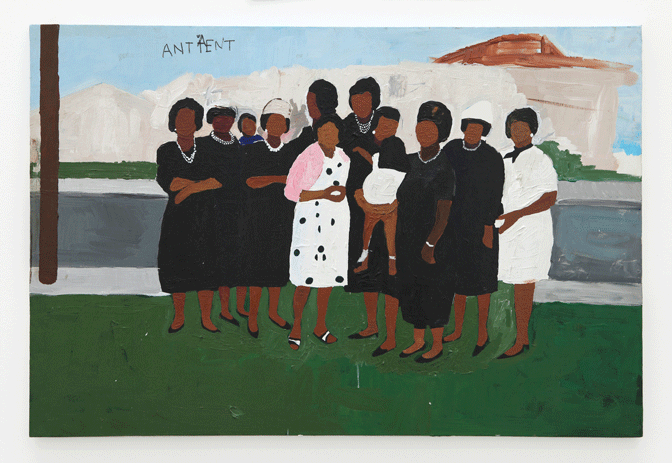Documentation of the present is manifested in photos, books, drawings and, of course, paintings. However, many people seem to filter out reality when life gets tough or try to mask the essence of our reality. With this in mind, the Los Angeles artist Henry Taylor asks strangers, family and friends to be his painting subject in a candid light. He's an artist well-known and respected for his figurative paintings and intimate portraits of everyday people, poverty and community.

Influenced by his father who was a painter working for the U.S. government, Taylor was exposed to art at a young age. As an adult, he first worked as a psychiatric technician where the exposure to mental health issues gave him insightful experiences into the human mind, allowing him to be receptive to his surroundings.
"I tend to embrace [mentally ill people] easier because of my relationship with them at the hospital. I’ve found that a lot of them are just innocent, sweet human beings,” said Taylor in an interview with the Wall Street Journal.
His upbringing shaped him to be respectful to everyone regardless of their race, gender or economic status. His subjects come from anywhere and everywhere, from "the poor, the marginalized, the addicted, the mentally ill, the desperate and forgotten—everyone is of interest to Taylor".
Focusing on and depicting these elements throughout his pieces makes Taylor's body of work relate to the United Nations Sustainable Development Goals (SDGs) on No Poverty and Reduced Inequalities.

Taylor's playfulness and charisma open up a genuine connection with his subjects and his audience. His portraits of African American lives are loosely rendered and are composed with abstracted fragments, emphasizing a certain uniqueness of each painted individual.
Similar to photography, he captures the stillness and radiating energy of his subjects.
His work represents personality and social realism, engaging with people is a constant inspiration. His approach is simply reflecting on life and engaging with the present. Painting from life rather than a photo is beneficial to Taylor because he feeds off these interactions which become rewarding, especially in the final product.

The importance of visibility for minorities goes beyond recognition, it's about being seen in a different light. Not many people do this yet Taylor provides an open and comfortable space allowing his subjects to present themselves authentically. He challenges the viewer to empathize with the black figures because it's more than a painting of a black man or black woman.

Taylor continues to project his own world in his work. A sense of familiarity is defined in his paintings giving the viewer the opportunity to personally identify and relate to their own lives. The intention to depict the black experience in America delivers themes of change, success and struggle in the execution.
Considering the range of experiences and feelings of the black community, Henry Taylor doesn't divide his experience from that of other black lives; he doesn't shy away from realness meanwhile producing meaningful interactions. It is this that makes him a well-respected artist beyond his artistic ability.
